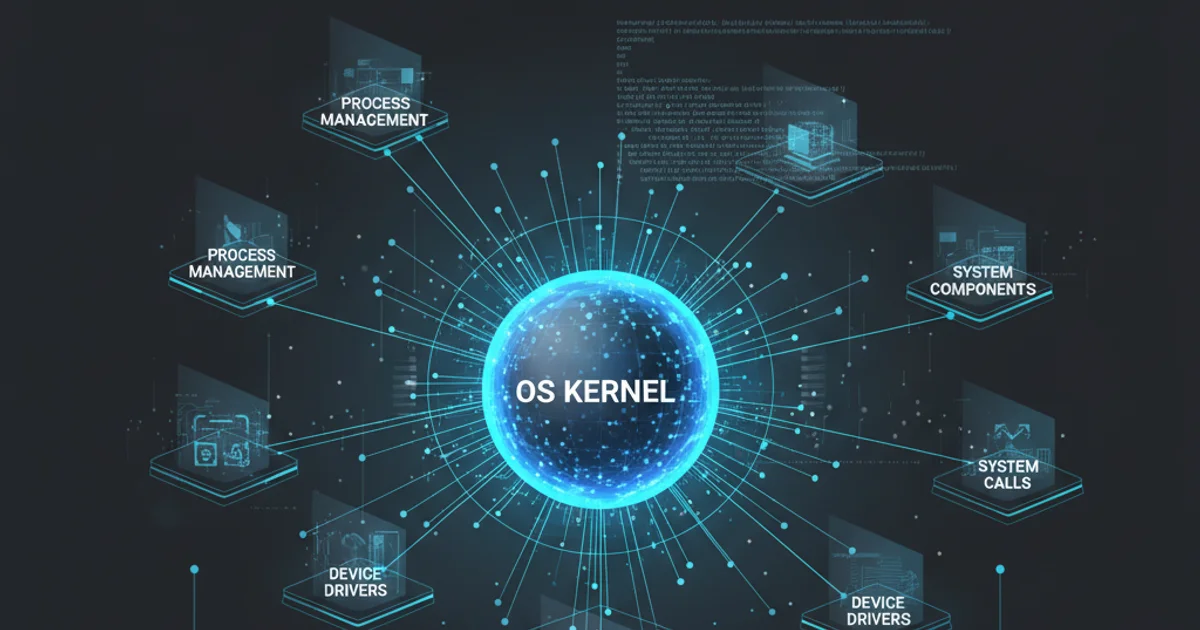What is an OS kernel ? How does it differ from an operating system?
Categories:
What is an OS Kernel? Understanding the Core of Your Operating System

Explore the fundamental role of the operating system kernel, its key functions, and how it differs from the broader operating system. Learn about the critical component that manages your computer's hardware and software resources.
At the heart of every operating system (OS) lies a crucial component known as the kernel. Often misunderstood or conflated with the OS itself, the kernel is the primary interface between a computer's hardware and its software. It's responsible for managing system resources, enabling applications to run, and ensuring the stability and security of the entire system. This article will demystify the kernel, explain its core functions, and clarify its distinct role within the larger operating system architecture.
The Kernel: The Brain of the OS
The kernel is the lowest level of software running on a computer, with direct access to the hardware. It's the first program loaded after the bootloader and remains resident in memory throughout the system's operation. Think of it as the central nervous system of your computer, coordinating all activities and ensuring that different parts of the system can communicate and work together efficiently. Without a kernel, your computer hardware would be a collection of inert components, unable to execute any meaningful tasks.
flowchart TD
A[Hardware] --> B[Kernel]
B --> C[System Calls]
C --> D[User Applications]
B --> E[Device Drivers]
E --> A
B --> F[Memory Management]
B --> G[Process Management]
B --> H[File System Management]
D --"Request Services"--> CSimplified interaction flow between hardware, kernel, and user applications
Key Functions of the Kernel
The kernel performs several critical functions that are essential for any operating system to operate. These functions include:
- Process Management: The kernel is responsible for creating, scheduling, and terminating processes (running programs). It allocates CPU time to different processes, ensuring fair resource distribution and preventing conflicts.
- Memory Management: It manages the computer's memory, allocating memory space to processes and ensuring that they don't interfere with each other's memory regions. This includes virtual memory management, which allows programs to use more memory than physically available.
- Device Management: The kernel interacts with hardware devices (like keyboards, mice, printers, and network cards) through device drivers. It translates requests from applications into commands that the hardware can understand and vice-versa.
- System Calls: It provides a set of interfaces, known as system calls, that user-level applications use to request services from the kernel. This is how applications access hardware or other protected resources.
- File System Management: The kernel manages how data is stored and retrieved from storage devices (like hard drives and SSDs), organizing it into files and directories.
Kernel vs. Operating System: A Clear Distinction
While the terms 'kernel' and 'operating system' are often used interchangeably, they are not the same. The kernel is a part of the operating system, albeit the most critical one. The operating system encompasses a much broader set of components, including:
- The Kernel: As discussed, the core component.
- System Libraries: Collections of functions that applications can use to perform common tasks (e.g.,
libcin Linux). - User Interface (Shell/GUI): The means by which users interact with the system, whether it's a command-line interface (CLI) like Bash or a graphical user interface (GUI) like GNOME, KDE, or Windows Desktop.
- System Utilities/Tools: Programs that perform specific system-level tasks, such as file managers, text editors, network configuration tools, and compilers.
- Applications: All the software that users run, from web browsers to word processors.
In essence, the kernel provides the fundamental services, while the rest of the operating system builds upon these services to offer a complete and user-friendly computing environment. Think of the kernel as the engine of a car, and the operating system as the entire car, including the chassis, wheels, seats, and dashboard.
graph TD
subgraph Operating System
K[Kernel]
SL[System Libraries]
UI[User Interface (GUI/CLI)]
SU[System Utilities]
end
A[User Applications] --> SL
SL --> K
UI --> K
SU --> K
K --"Manages"--> H[Hardware]Relationship between the kernel and other OS components
Understanding the distinction between the kernel and the operating system is crucial for comprehending how modern computing systems function. The kernel's efficiency, security, and stability directly impact the overall performance and reliability of the entire OS. It's a testament to complex engineering that this relatively small piece of software can orchestrate the vast array of components within a computer to deliver a seamless user experience.